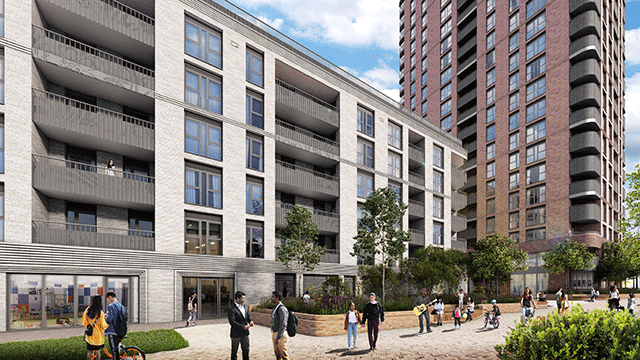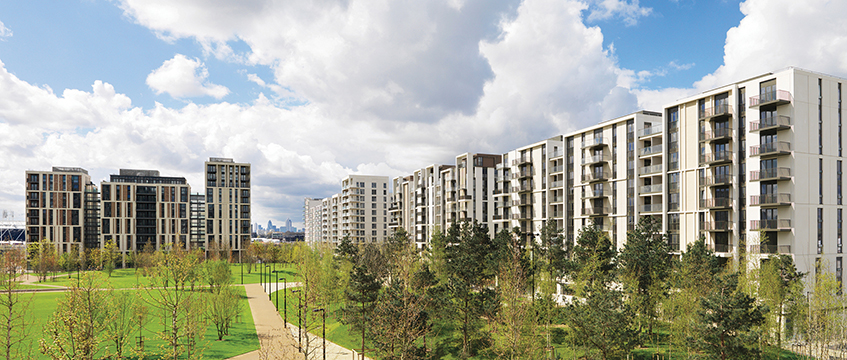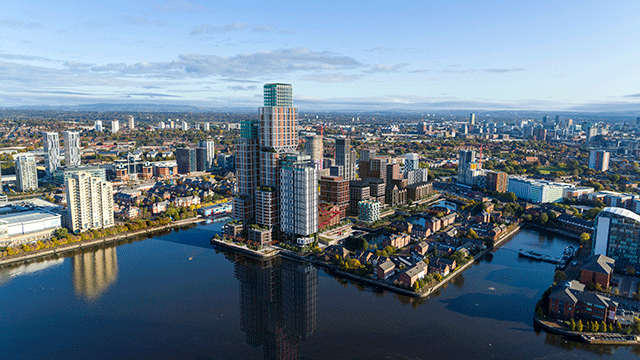Greystar, Get Living and the British Property Federation have opposed a fresh amendment to the London Plan that would bring social housing into build-to-rent schemes for the first time.
Under the new proposal, BTR developers would be forced to include traditional social housing in their schemes in place of the current ‘discount market rental’ housing. They would no longer enjoy sole ownership, as local authorities or other registered providers would step in to manage the affordable housing element.
Developers would potentially have to hand over 35-50% of BTR schemes to social housing, the current recommended rate for all London schemes.
The draft London plan is being examined in public until May and is expected to be formalised this autumn.
The new proposals state: “Where justified in a development plan, boroughs can require a proportion of affordable housing as low-cost rent (social rent or London affordable rent) on build-to-rent schemes… Low-cost rent homes must be managed by a registered provider.”
Treading a fine line
However, industry leaders argue that the Greater London Authority’s latest push to boost social housing is at odds with the economics of developing BTR blocks.
At an evidence in public session, Rick de Blaby, executive chairman of Get Living, explained that amenity-heavy and high-quality BTR developments incur greater costs, and as a result there is “a fine line between success and failure”.
He added that, unlike discount market rental housing, which allows affordable housing to be located throughout the development under the same management structure as the pure market units, the new proposal would carry significant additional costs.
He said: “If you then create a circumstance where you have to produce a series of social units that are run by a registered provider, you’re then in the realms of producing extra staircases, extra corridors – you’re separating the management out when all of these costs could have actually gone into providing more housing.”
James Pargeter, development director at Greystar, said: “Unified ownership is crucial to the success of these communities and for attracting the investment to allow these schemes to be developed at all.”
He said the amendment contradicts this through segregating social rented accommodation, mirroring the direction of the “increasingly polarised” for-sale market.
Pargeter commented: “We and our investors need clarity – this introduces that level of uncertainty which is the last thing required, particularly in the current times.”
Sizeable portfolios
Both Get Living and Greystar have sizeable portfolios in London. Get Living operates 1,500 BTR homes at East Village (pictured above). The former Olympic Park site in Stratford spans 67 acres and will see a total of 5,000 units. US rental giant Greystar has 1,000 homes in a joint venture with Henderson Park, with a further 3,000 at Wembley and Greenford.
According to the BPF’s most recent figures, there are currently 14,800 completed BTR homes in London, with 19,300 under construction and 38,700 in planning.
Ian Fletcher, director of policy at the BPF, also attended the session. He told EG: “Build-to-rent accounted for 25% of housing output in London as of the end of 2018. Therefore, anything that makes delivering BTR harder could ultimately have quite a dent on housing delivery as a whole.
“For a private investor, it has an impact on viability. If investors want to sell a BTR scheme on to another investor, it will be more of a challenge if part of the block is managed and owned by a third party.”
He added that introducing such a change late in the process was also unhelpful. The new amendment was submitted on 11 January and made public the following week, several months after the draft was originally published in August.
“This was not part of the original consultation. This was one argument we articulated at the hearing. It was flipped in at the last moment and therefore procedurally not really great. It is such a wide-ranging change in policy that it should have been consulted on at the draft plan stage.”
A spokesperson for the mayor of London, said: “The mayor believes that this proposal will increase the supply of much-needed social rented homes and reduce uncertainty for developers.
“Some boroughs already ask for social rented homes in build-to-rent developments, and they specify how many on a scheme-by-scheme basis. This proposal would mean that boroughs would need to set this out up-front in their development plan, providing clarity and certainty for developers regarding the local approach from the outset.”
To send feedback, e-mail emma.rosser@egi.co.uk or tweet @EmmaARosser or @estatesgazette











